Ollantaytambo Town
Ollantaytambo has a good vibe.
If I had to put my finger on it, I think I like it because it feels like an Inca frontier town. Even now.
Ollanta (the shortened local name) sits at the end of the Sacred Valley: upriver lies plentiful farmland, roads, and many towns; downriver the valley narrows so only a single train track fit between the churning water and the steep hillsides. You’re on the edge of easy civilization, where visitors still pass through to get from their normal world to the wild isolation, and Machu Picchu, that is downriver.
And because it is on this edge and on the way to nowhere, the Spanish conquistadors — for the most part — left it as they found it. The town still has the Inca street grid; the streets still have the Inca water channels running down them; and most houses were built when the Inca king still lived. And it still works as a town. Ollanta feels right-sized and very human.
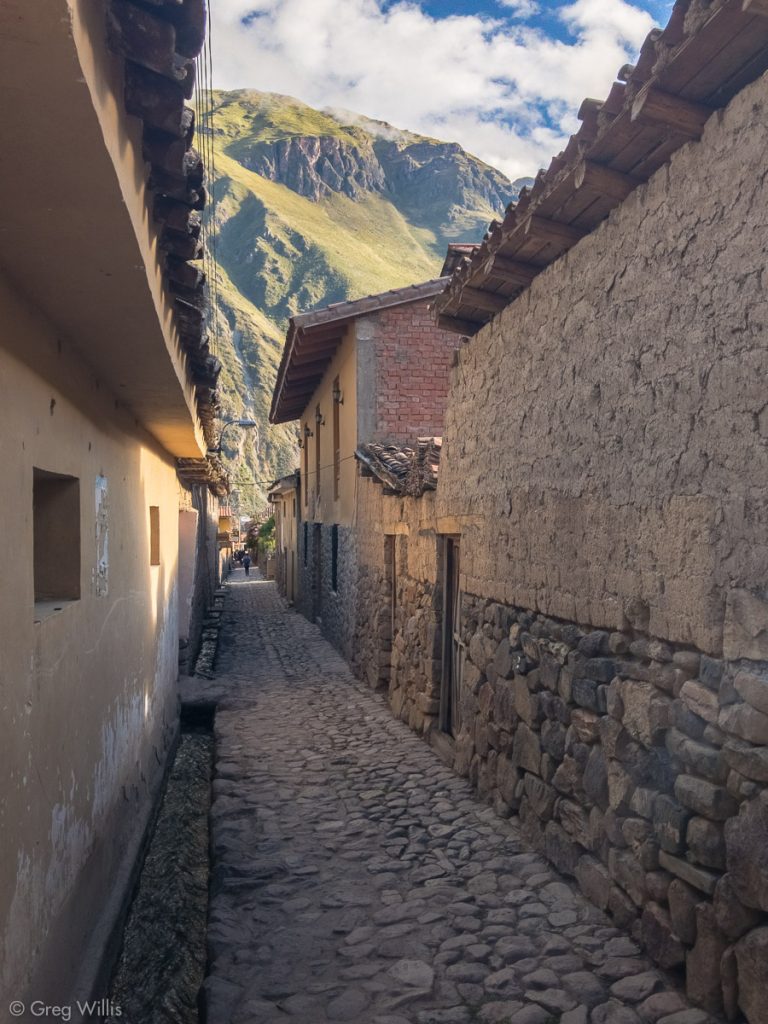
If you’re staying, the town has plenty of food and lodging. But most tourists don’t stay. They either pass through this frontier town to & from Machu Picchu without staying the night or they come from Cusco on a day trip. This suits me fine, for once the busses are gone and the trains pull away, we felt like we had we almost place to ourselves. And Ollanta is the calm center of a great number of things to do & see. We hiked, biked, and wandered from our base here.
We stayed three nights here, but wished we could have spent two more.
Ollantaytambo Ruins
Inca ruins cling to both sides of the steep Patacancha valley, and you’ll find yourself staring at them from the streets of the town thinking “No, that’s too high up for a building.” But yup, they’re up there. Qollqa, Inca storehouses, are on either side; and a temple complex proudly stands flanking the right where it joins the larger Sacred Valley.
The temple complex is the meat of the ruins, and you’ll need your boleto turistico to enter. Get there when it opens, and not just for the good morning light. Like any tourist sight, [universal_truth] if you arrive before the busses you will have a better experience. And count on spending a couple of hours – we stayed for 2 1/2.
Although founded by his grandfather, the great Inca emperor Pachacuti, Manco Inca Yupanqui fortified it against the Spanish and indeed won a battle against them here. But the location of Ollantaytambo was still too close to the Spanish presence in Cusco, so Manco abandoned Ollanta and moved his court and army further downriver into the jungle. And after you climb the terraces, pass the Wall of Ten Niches, and enter into the main temple area you can see when Manco left. Huge partly-carved stones sit today exactly where they were when the Inca masons put down their tools to leave.
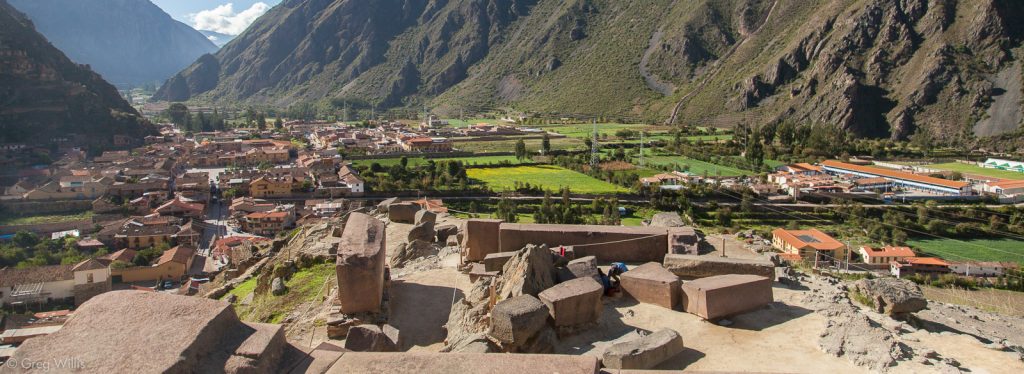
The main temple area has great views and the details of the masonry — especially the Six Monoliths — are extraordinary:
Continue up the hill to see the Intihuatana, sacred rock, and get a better viewpoint. Then go back down and visit the ruins at the foot of the hill. And it’s on this lower level, the Incamisana, where the Inca show off their prowess with water.
The fountain called Baño de la Ñusta (Bath of the Princess) is so graceful: a stream of water flowing in a single block of stone, over the Inca’s sacred stepped chacana symbol, and into a small pool.
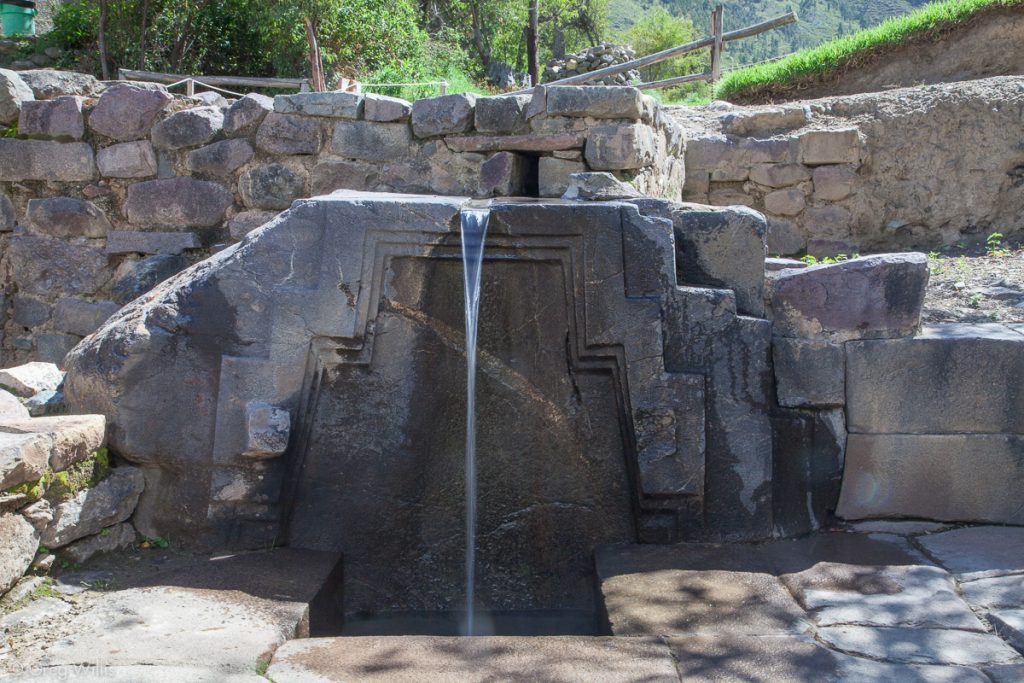
And there’s even more water & rock carving as you continue. When visiting Inca ruins, look for water, look for stone. Stone and water pervade the sacred places of the Inca. Platforms & niches carved into the live rock. Channels and fountains moving water through their temples and other locations deemed special. Ofttimes combining the two to achieve moving water over the live rock.
And the Incamisana part of the Ollantaytambo ruins show this as well as any.
Our hotel room at Hostal Iskay faced this part of the ruins, and it was a privilege to wake up to them. We started our trek to Machu Picchu on our third morning, just as the sun began to hit the ruins. And it’s the whole package — town and ruins — that make visiting Ollantaytambo so special. Pause, if you can, before you head beyond the frontier. A few nights in Ollanta, you’ll be happy you did.
Stats
- Elevation: 9,160 ft
- Food: El Albergue Restaurant (fancy) & Apu Veronica Restaurant (casual)
- Lodging: Hostal Iskay
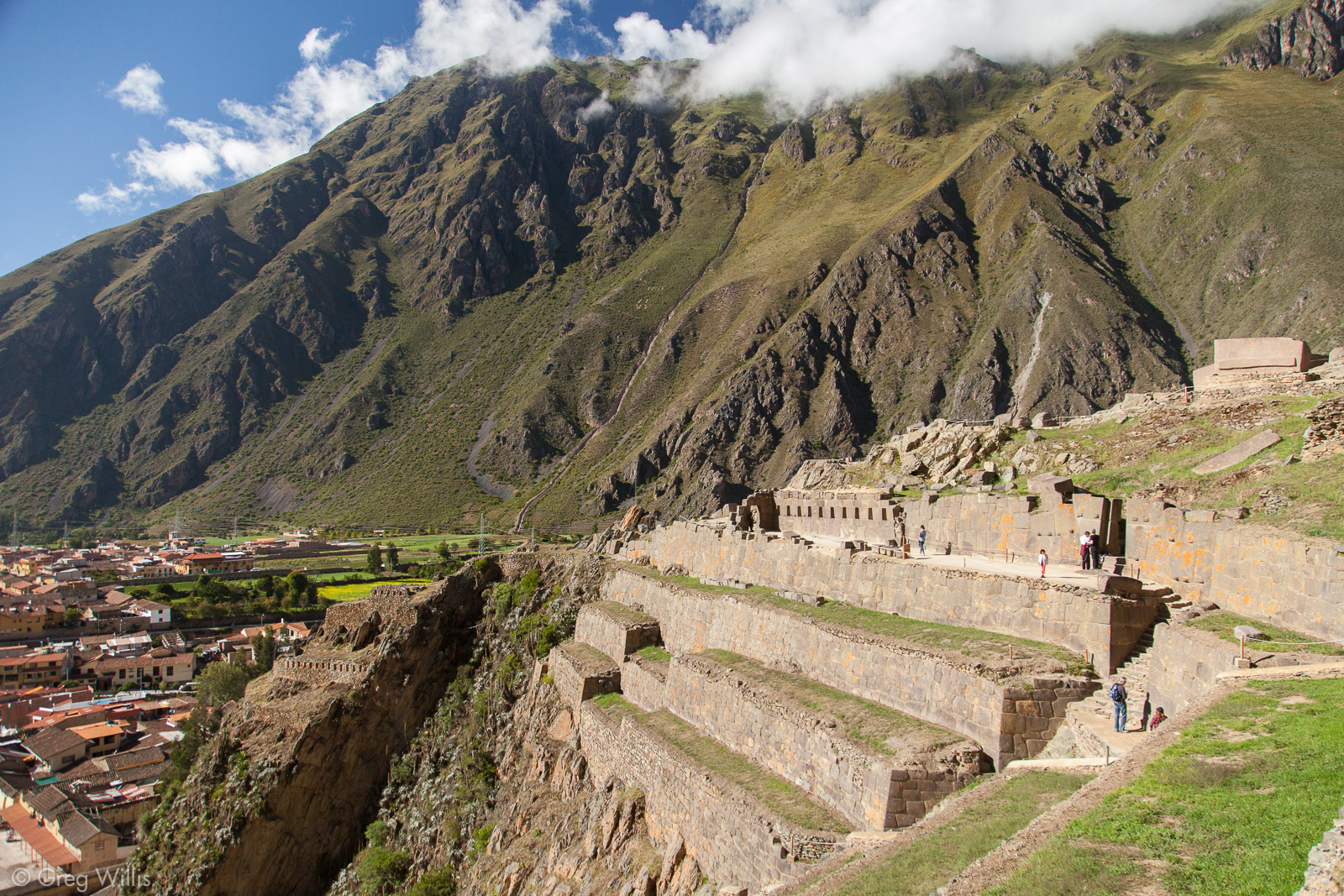
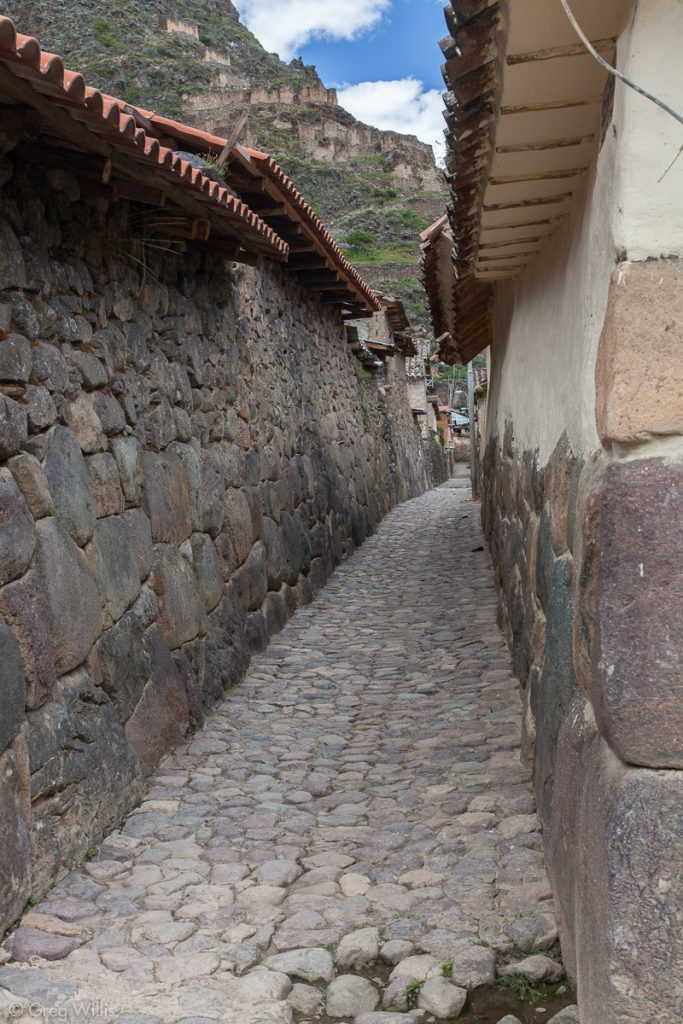
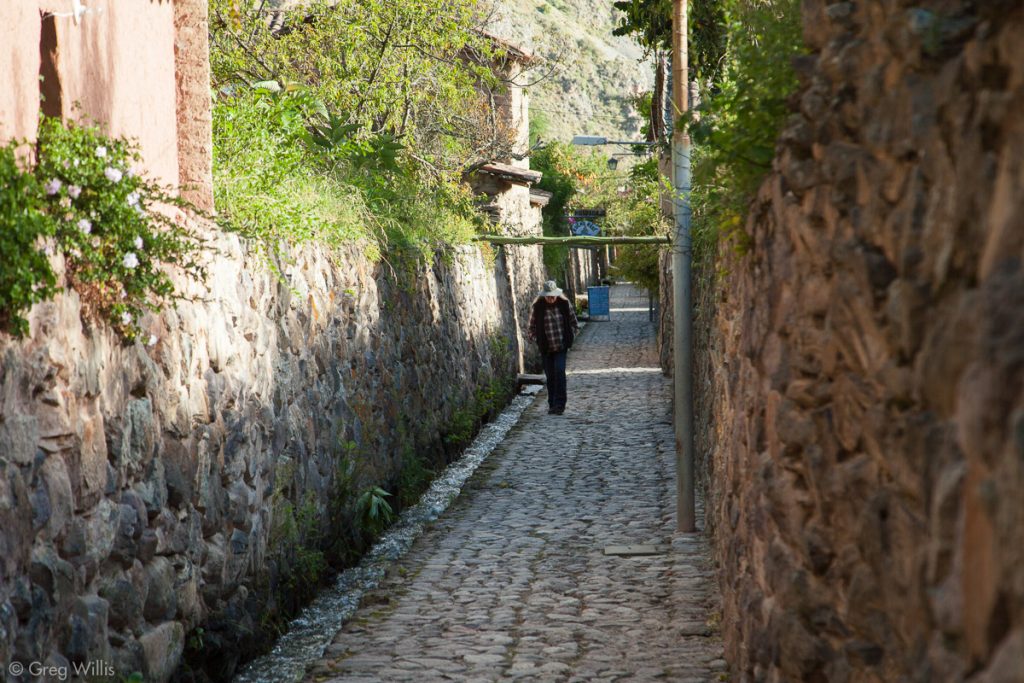
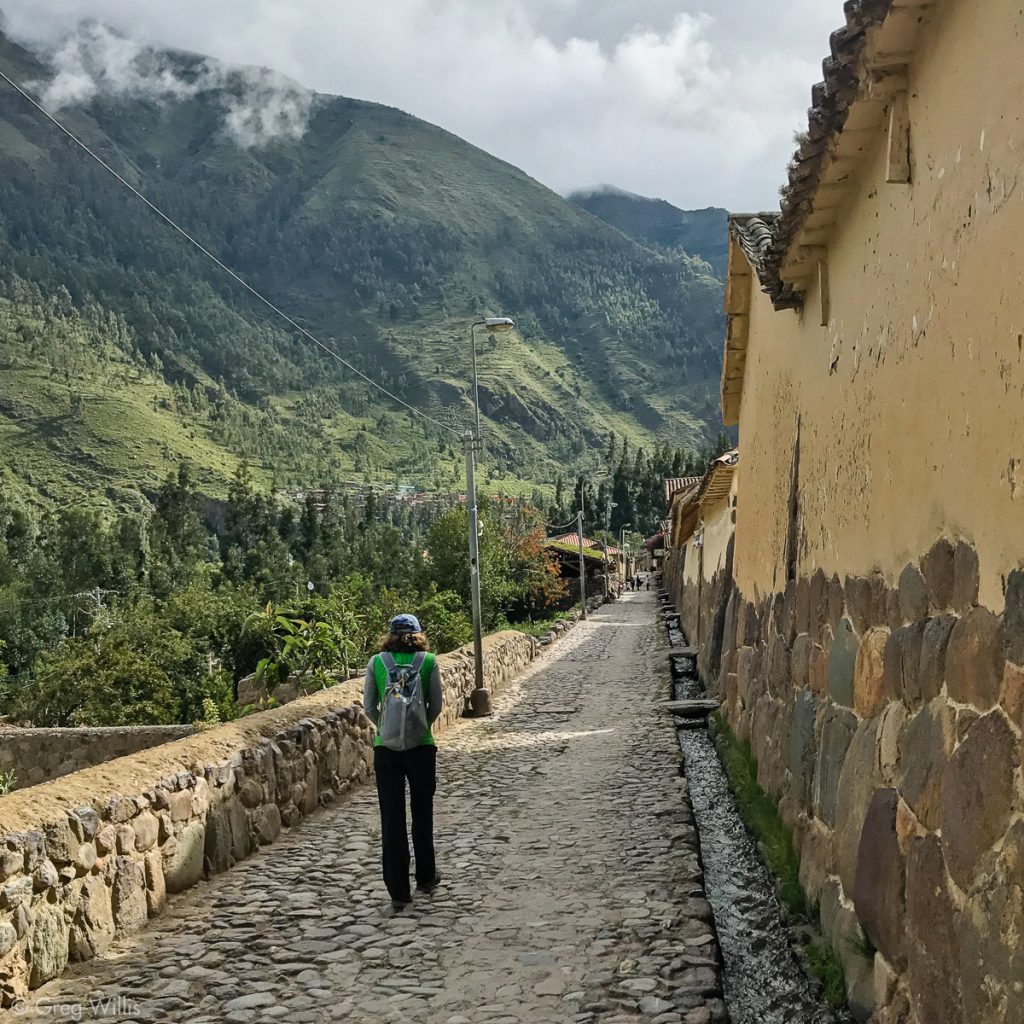
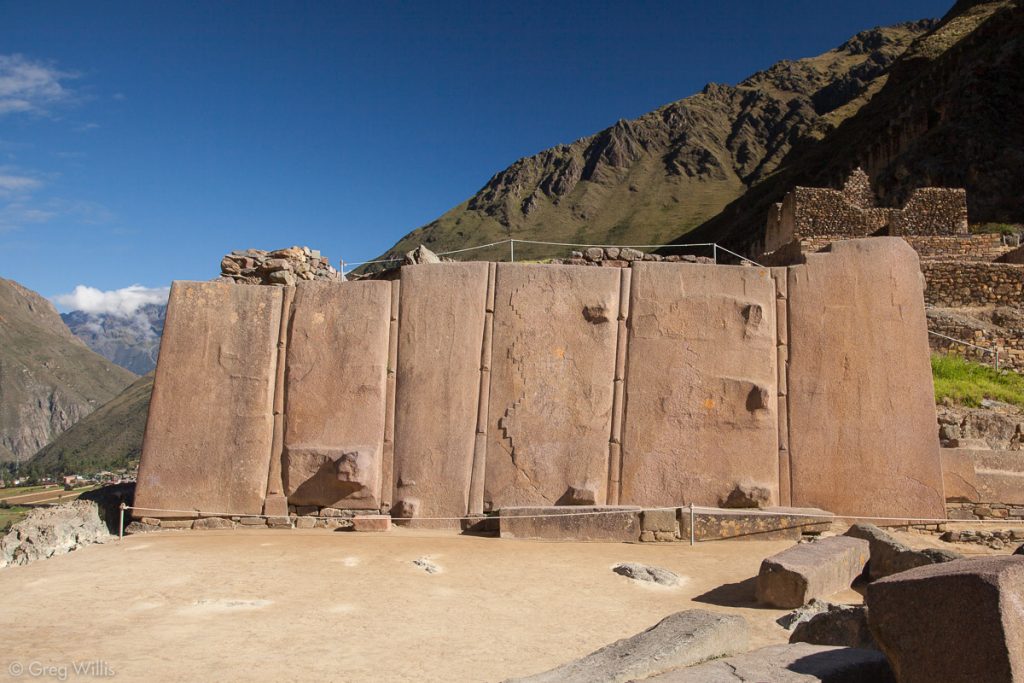
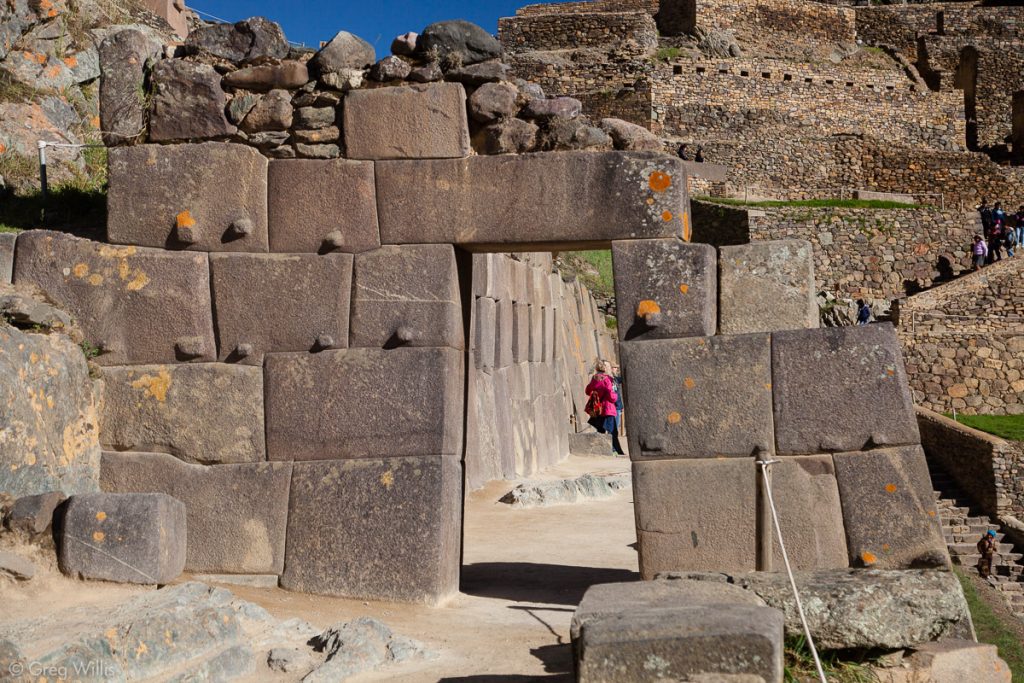

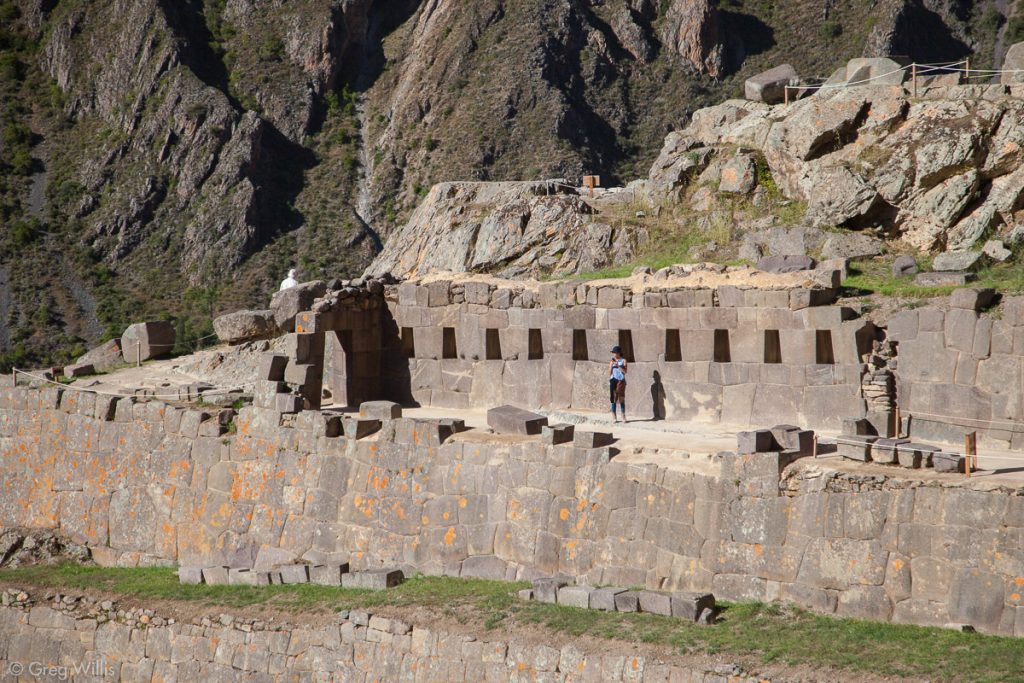
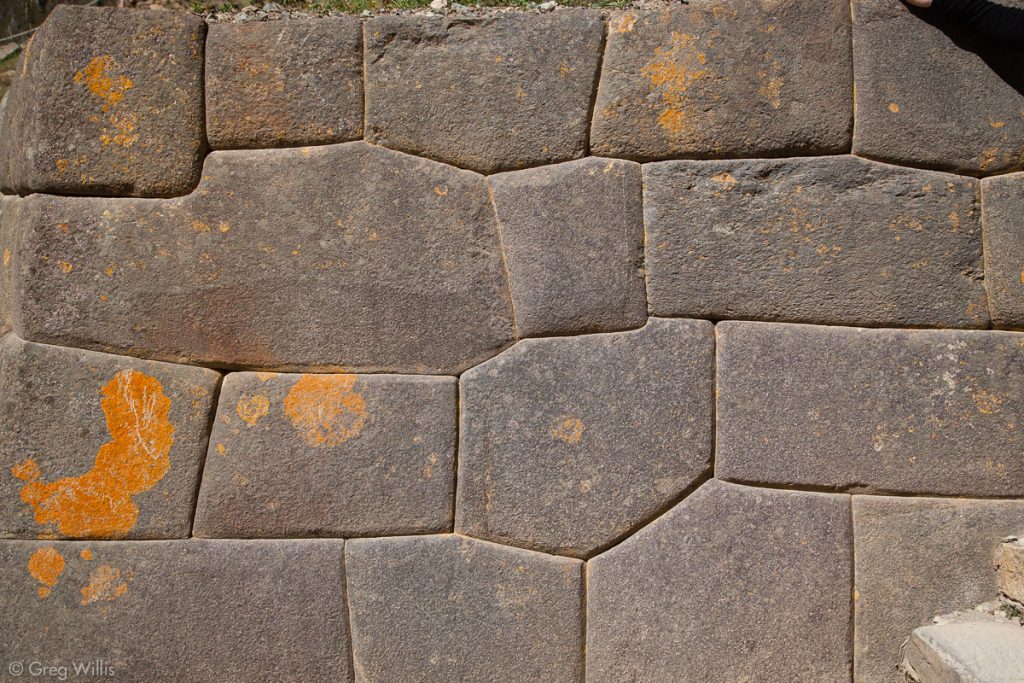

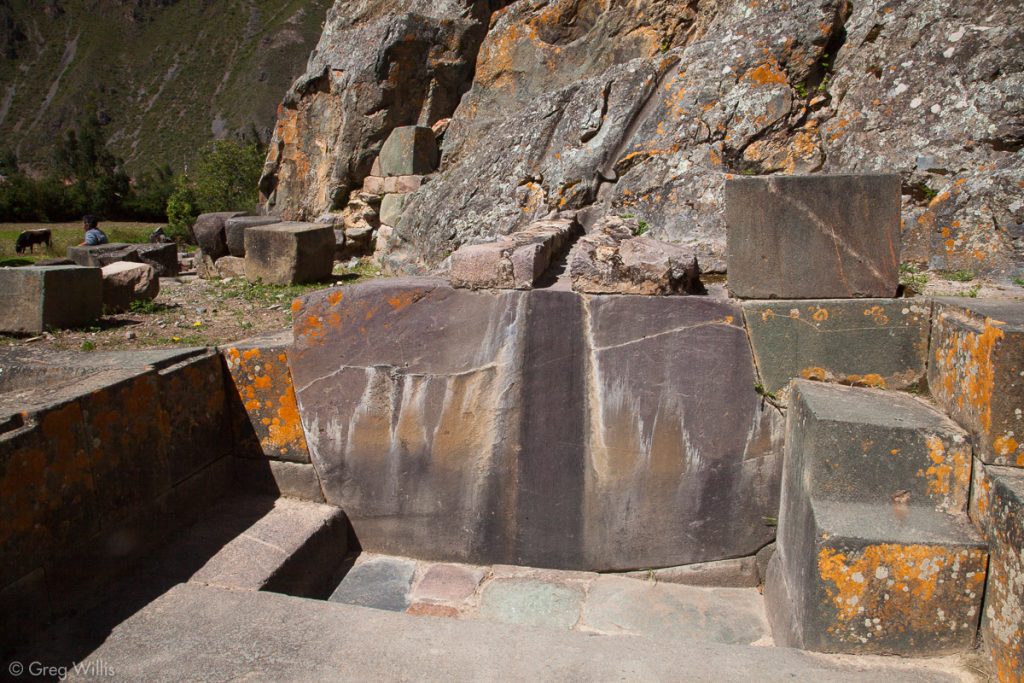
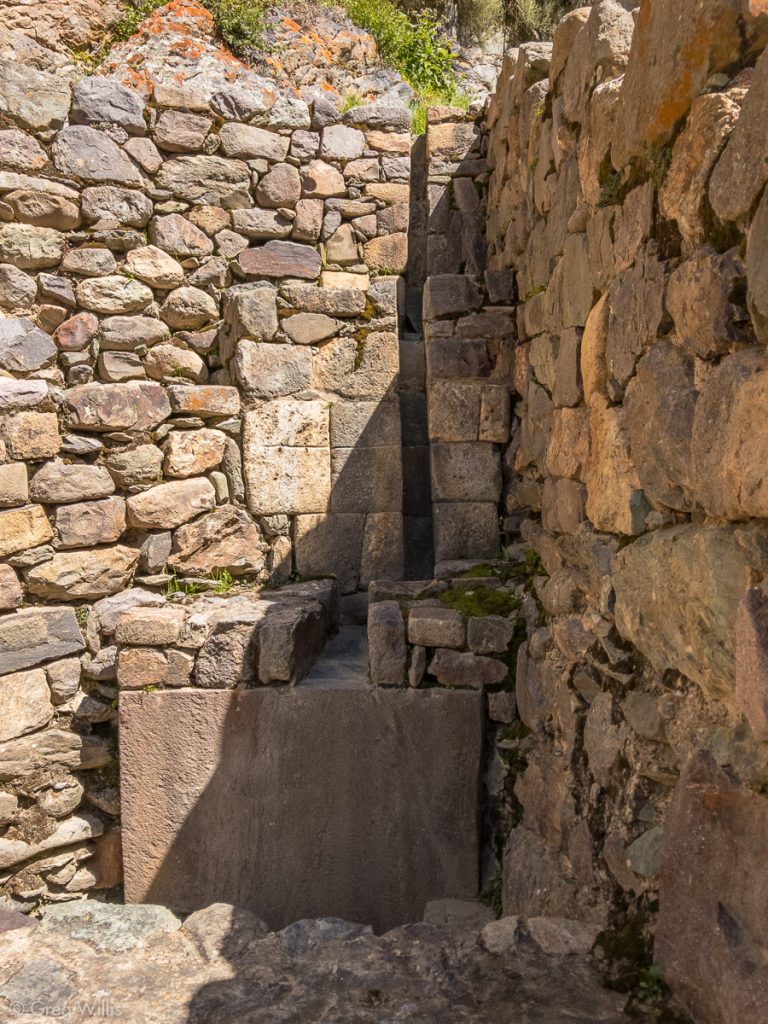
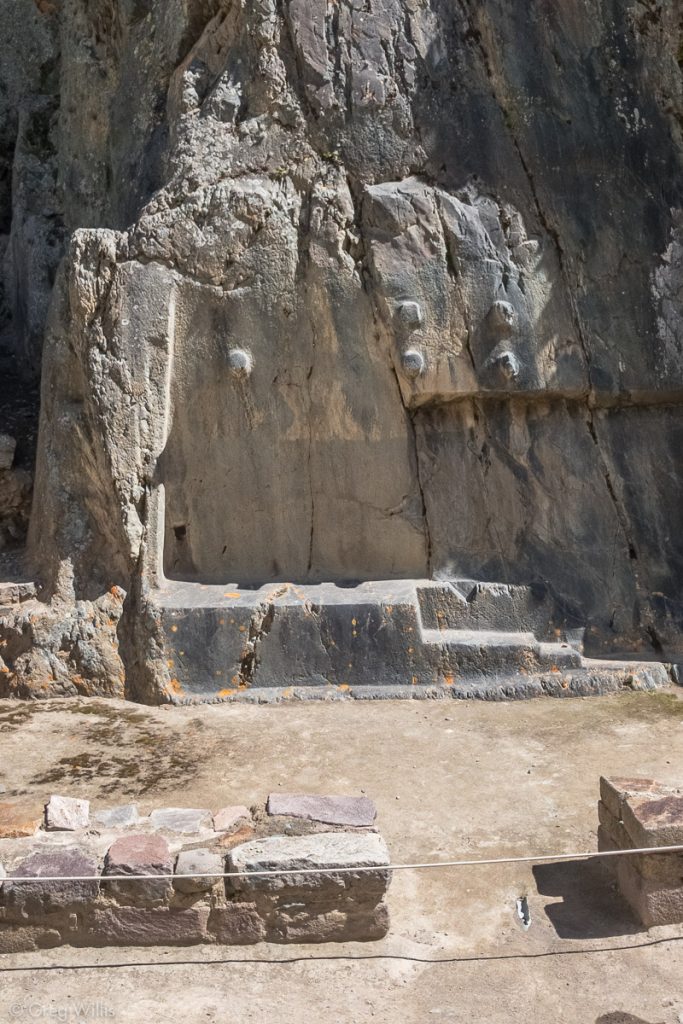
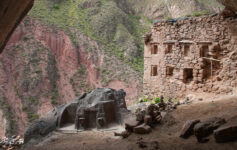
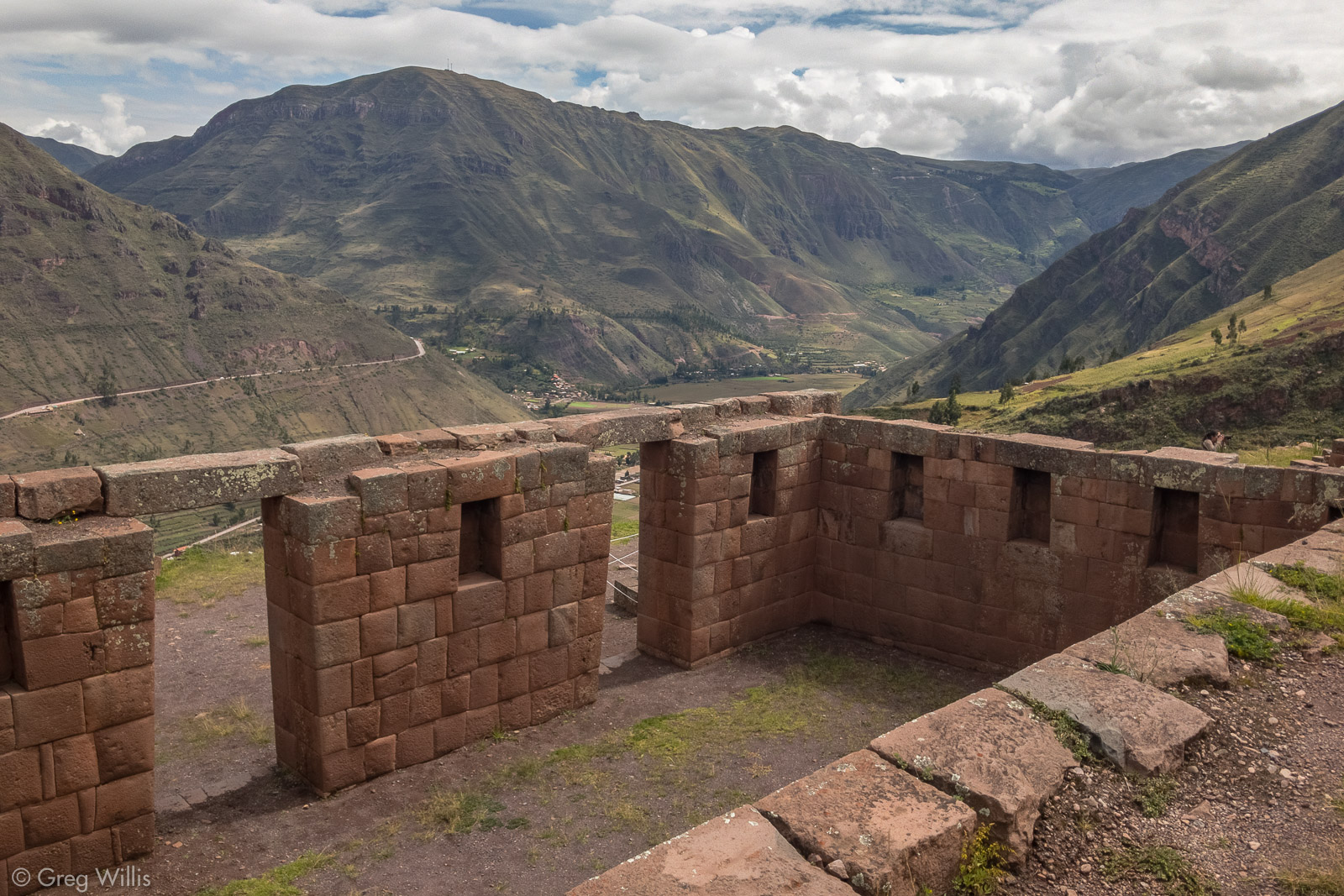
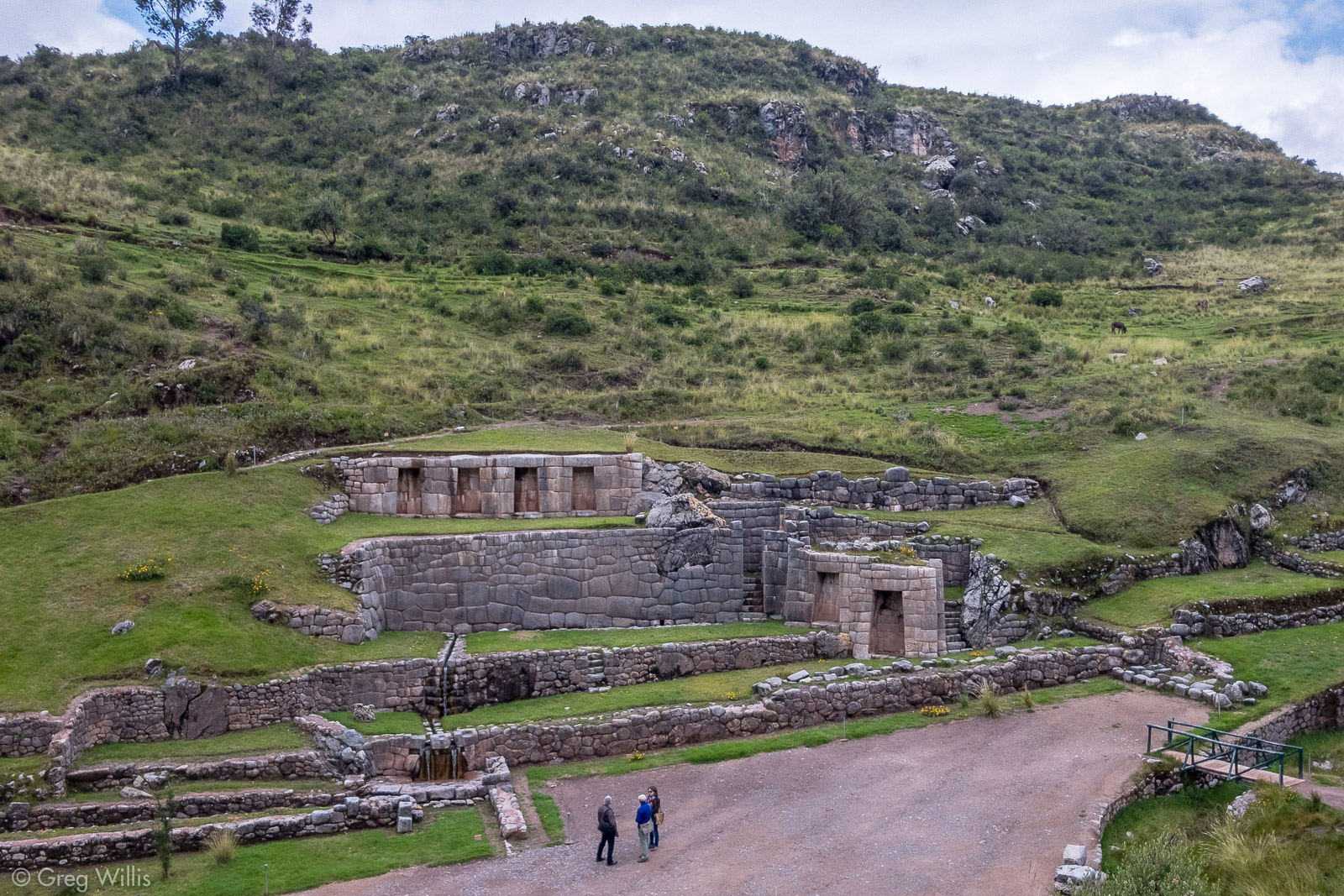

1 Comment